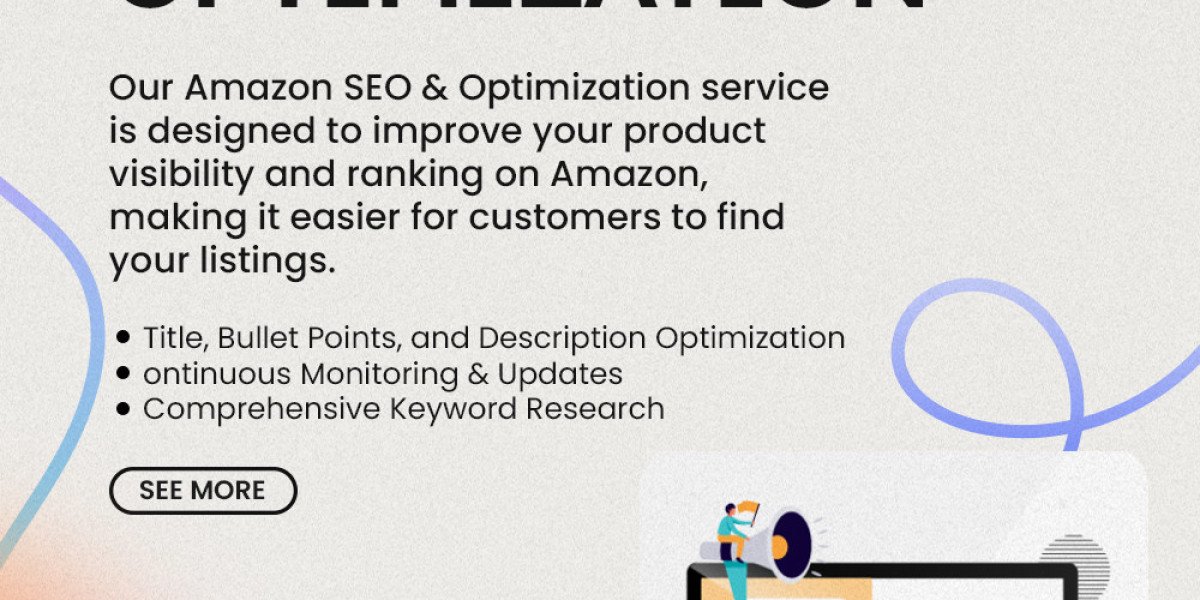Introduction
If you’re selling on Amazon, ranking high in search results is crucial. Amazon SEO (Search Engine Optimization) helps your products appear in front of more shoppers, increasing sales. Unlike Google SEO, Amazon SEO focuses on sales-driven factors like keywords, product relevance, and conversion rates.
In this guide, we’ll break down the key strategies for optimizing your listings and boosting visibility on Amazon.
Understanding Amazon's A9 Algorithm
Amazon's search algorithm, known as A9, determines product rankings based on various factors, including:
- Relevance: How well your product matches a shopper’s search query.
- Conversion Rate: Sales history, customer reviews, and click-through rates.
- Pricing & Availability: Competitive pricing and in-stock status improve rankings.
By optimizing these factors, you can improve your product’s visibility and increase conversions.
Keyword Research: The Foundation of Amazon SEO
Finding the right keywords is the first step in improving your Amazon SEO. Here’s how to do it:
- Use Amazon’s Search Bar: Type relevant words and see the autocomplete suggestions. These are popular search terms.
- Analyze Competitor Listings: Check top-ranking competitors’ titles, bullet points, and descriptions for keyword ideas.
- Use Keyword Research Tools: Tools like Helium 10, Jungle Scout, and MerchantWords can help identify high-traffic keywords.
- Consider Long-Tail Keywords: Instead of broad terms like "wireless headphones," use "noise-canceling wireless headphones for travel."
Optimizing Your Amazon Listing for SEO
1. Title Optimization
Your product title is one of the most important ranking factors. Follow these best practices:
- Include primary keywords naturally.
- Use a clear, readable format (e.g., “Brand + Main Keyword + Features + Size”).
- Stay within Amazon’s character limits (200 for most categories).
2. Bullet Points for Better Conversions
Bullet points help highlight key features and benefits. Use them strategically:
- Focus on benefits, not just features.
- Include relevant keywords naturally.
- Make it scannable and easy to read.
3. Compelling Product Descriptions
Your product description should provide additional details while incorporating keywords. Consider using:
- Persuasive language to encourage conversions.
- HTML formatting (if allowed) for readability.
- A mix of primary and secondary keywords.
4. Backend Keywords
Amazon allows you to add hidden keywords in the backend search terms field. Best practices:
- Avoid repetition—Amazon ignores duplicate keywords.
- Use synonyms and alternative search terms.
- Do not exceed the 250-character limit.
Enhancing Product Images & A+ Content
1. High-Quality Images
Amazon allows up to 9 images per listing. Use this to your advantage:
- Include lifestyle images to show the product in use.
- Use infographics to highlight key benefits.
- Ensure images are at least 1000px for zoom capability.
2. A+ Content (Enhanced Brand Content)
If you’re brand-registered, take advantage of A+ Content:
- Add high-quality visuals, comparison charts, and storytelling elements.
- Improve customer engagement and trust.
- Potentially boost conversions by 10% or more.
Leveraging Reviews & Ratings
Customer feedback plays a vital role in Amazon SEO. To improve your reviews:
- Provide excellent customer service to encourage positive reviews.
- Use Amazon’s "Request a Review" button to remind buyers.
- Resolve negative feedback proactively to maintain high ratings.
Pricing & Amazon SEO
Competitive pricing improves your chances of ranking higher. Consider:
- Using dynamic pricing tools to stay competitive.
- Monitoring competitors’ prices regularly.
- Offering promotions or discounts to drive initial sales.
Monitoring & Adjusting Your SEO Strategy
Amazon SEO isn’t a one-time task—it requires ongoing optimization. Use these tools to track performance:
- Amazon Brand Analytics (for brand-registered sellers).
- Helium 10, Jungle Scout, or SellerApp for keyword tracking.
- A/B Testing to refine titles, images, and descriptions.
Conclusion
Mastering Amazon SEO takes time, but with the right strategy, you can improve rankings, increase sales, and grow your business. Focus on keyword research, listing optimization, high-quality images, competitive pricing, and customer reviews.
By continuously refining your approach, you’ll stay ahead in the ever-competitive Amazon marketplace.
Must Visit Our Site for the Service: White Snow Ads








